When I set out to explore Kythira, I didn’t expect two quiet villages to completely shift how I saw the island. Most folks head straight for the famous beaches, but honestly, the real heart of Kythira beats in its peaceful corners, where traditional life still feels alive.
Avlemonas and Mylopotamos blend coastal charm and surprising inland beauty, creating that irresistible Kythira magic. Avlemonas, with its tiny fishing harbor, sits like a natural swimming pool tucked between rocky cliffs. Meanwhile, Mylopotamos greets you with waterfalls and greenery so lush you might forget you’re on a Greek island.
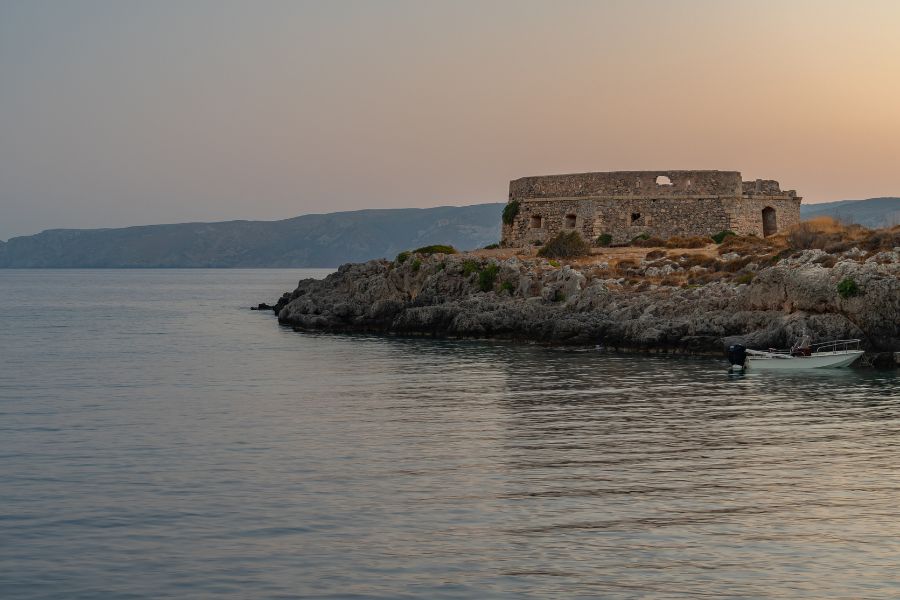
Roaming between these two gems, I realized Kythira offers something rare for travelers who crave authentic Greek experiences. I swam in clear coves, stumbled upon old watermills, and saw how these villages showcase a blend of Cycladic architecture with a hint of Ionian wildness.
Avlemonas: The Jewel of Kythira
Avlemonas really stands out for its traditional Greek island vibe. The working harbor, Cycladic-style homes, and small, protected bays bring together authentic fishing culture with natural beauty that’s both timeless and welcoming.
Charming Harbor and Fishing Village Atmosphere
Avlemonas’ harbor buzzes with activity every day. I watched fishermen haul in their catch as bright boats bobbed gently in the protected water.
Two sheltered bays hug the village, creating a calm haven for boats and swimmers alike.
Back in Venetian times, people called this port Agios Nikolaos. It served as one of Kythera’s main gateways.
Key Harbor Features:
- Active fishing fleet
- Twin protected bays
- Traditional boat moorings
- Stone quay and breakwater
A 16th-century fortress still guards the harbor entrance. The Venetians built this little castle, their third fortification on Kythera.
You can almost picture the cannons and lookouts that once stood here.
Whitewashed Architecture and Cycladic Influences
Avlemonas’ houses look more Cycladic than Ionian—white walls, blue shutters, and that classic Greek island feel.
Stone paths weave through the village, connecting everything with winding charm.
The Cavallini house, with its sundial over the door, once held the Austro-Hungarian consular office.
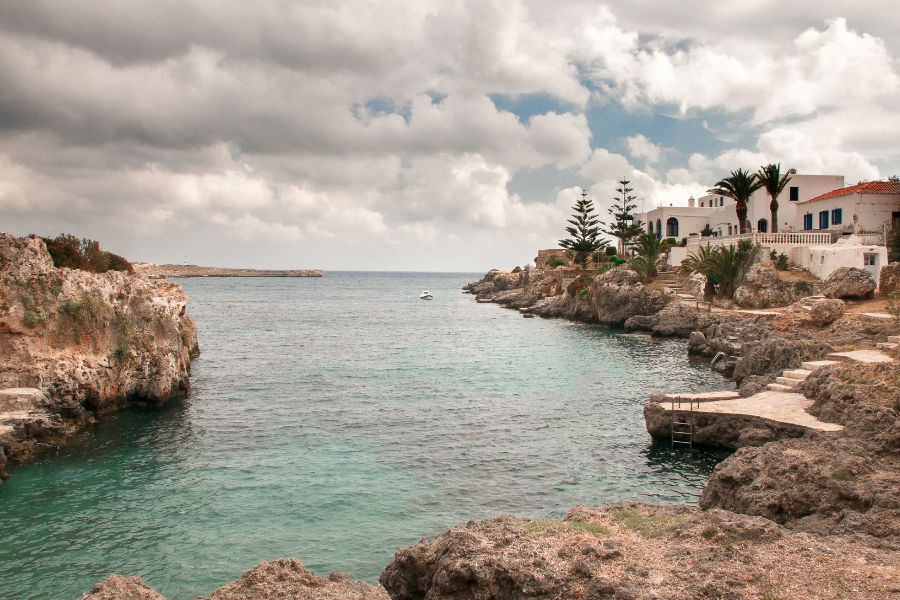
Most buildings keep things simple and clean, blending right in with the rocky coast and endless blue sea.
Architectural Elements:
- Whitewashed stone walls
- Blue wooden shutters
- Flat or low-pitched roofs
- Traditional Greek doorways
Cultural Heritage and Local Traditions
Every August 6th, the harbor comes alive for the feast of Sotira. Thousands gather for this celebration.
Fishing and maritime traditions run deep here. Families have worked these waters for generations.
Despite some tourism, the village keeps its authentic character. Locals still celebrate Greek customs and religious holidays.
The church sits at the heart of village life, and I could feel how it brings everyone together.
Nearby Beaches and Swimming Spots
The main beach feels like a real-life swimming pool—emerald water, calm and warm all summer.
Along the shore, sandy stretches give way to rocky patches. Swimmers can pick their favorite spot to dive in.
Hidden coves dot the coastline, offering quiet escapes away from the main beach.
Because the bays are so sheltered, waves rarely get rough. Families love the gentle water, and it’s easy to see why.
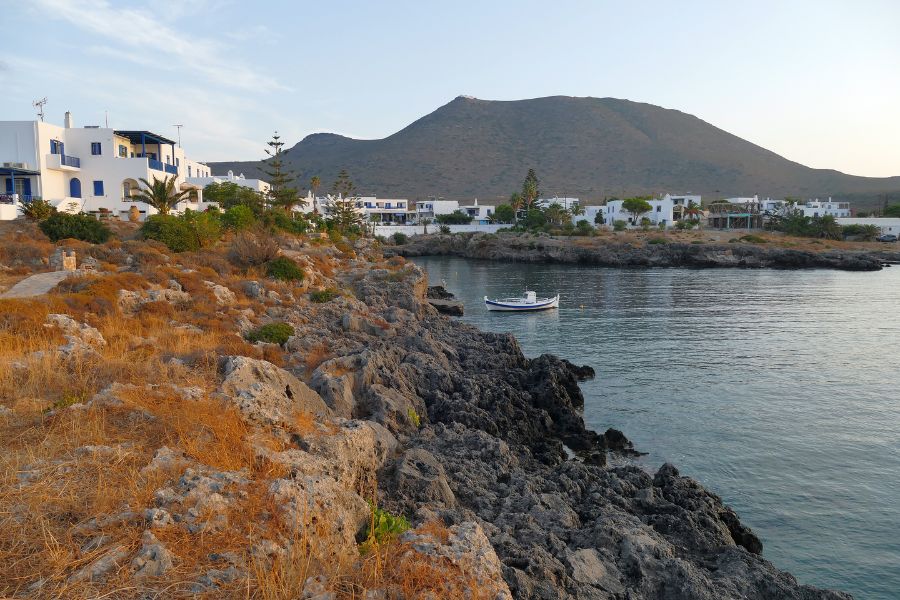
Beach Characteristics:
- Pool-like calm waters
- Sand and rocky mix
- Several small coves
- Super clear water
Exploring Avlemonas’ Sights and Experiences
Avlemonas packs a punch for such a small place. You get Venetian military architecture, historic homes, and food that’ll make you want to linger long after lunch.
Venetian Castle and Historical Landmarks
The little fortress at the harbor entrance grabbed my attention right away. Built in the 16th century, this Kastelo is the third Venetian fort on Kythira.
I wandered through the old stone walls, picturing battlements and cannons once defending the port. The fortress played a key role in controlling sea traffic during Venetian rule.
From up there, you get sweeping views of the harbor and both bays. Even after centuries of storms, the place feels sturdy and alive.
The Sundial House and Consulate History
The Cavallini house stands out with its sundial carved over the entrance. It’s not just for show—the sundial still works, tracking the hours as the sun moves.
In the 19th century, this house served as the Austro-Hungarian consular agency. Diplomats helped travelers and handled official business right here.
Locals love pointing out the sundial to visitors. It’s a quirky detail that says a lot about the village’s layered history.
You can see hints of Venetian, Ottoman, and later European styles in the building’s design.
Restaurants, Cafés, and Local Cuisine
I found some fantastic dining spots tucked among Avlemonas’ narrow lanes and along the waterfront. Fresh seafood is the star here, straight from the fishermen’s boats.
Popular dining options include:
- Waterfront tavernas with grilled fish
- Cozy cafés serving Greek coffee and sweets
- Family-run restaurants with homemade specialties
Sea bream, octopus, and other Mediterranean catches show up on menus daily. I loved pairing seafood with local veggies—simple, but so good.
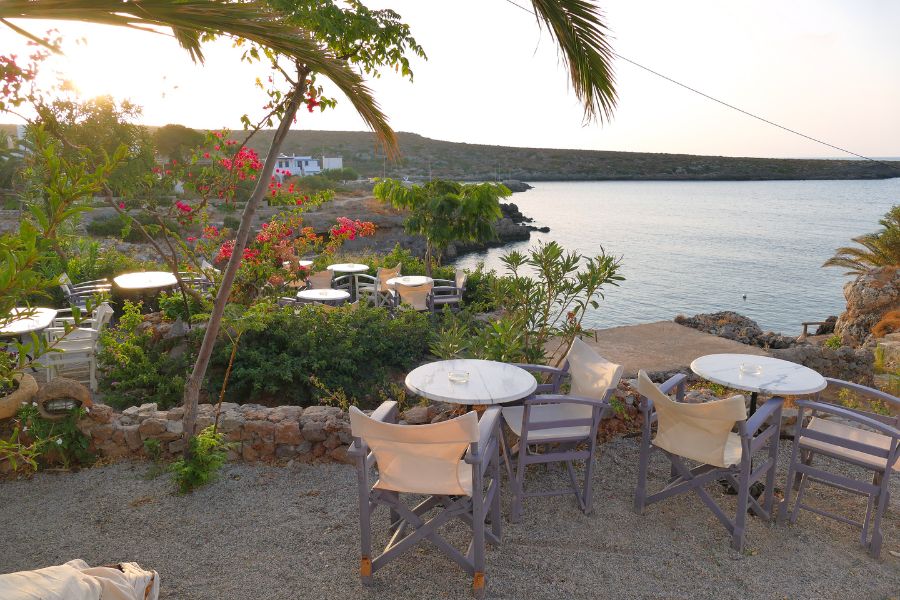
Most places offer outdoor tables with harbor views. Eating here feels peaceful and unhurried, a nice change from crowded tourist towns.
Swimming and Seaside Bliss on Kythira
If you love swimming, Kythira’s got you covered. The island’s bays and natural pools make for perfect, crystal-clear dips—whether you’re after adventure or just want to float in peace.
Avlemonas’ Natural Pools and Crystal Coves
Swimming in Avlemonas is like plunging into a giant natural pool. The harbor’s emerald water stays calm and warm, right in the heart of the village.
Rocky spots around the harbor are great for diving. The water’s so clear, I could see the bottom even in the deep parts.
What makes Avlemonas special:
- Sheltered bay, no waves
- Crystal-clear water for snorkeling
- Rocky edges for diving
- Sandy spots for easy entry
Cafés and restaurants overlook the swimming area, so you can grab a coffee and still keep an eye on the water.
Locals love swimming here in the evening. Lights reflect on the bay, and the whole place feels a bit magical.
Paleopoli and Kaladi Beach Adventures
Kaladi Beach gets called the best swimming spot on Kythira—and honestly, it lives up to the hype. The water’s a dazzling blue, and swimming conditions are excellent.
There’s deeper water here if you want to do some real swimming. The mix of sand and rocks along the shore keeps things interesting.
Paleopoli, just a stone’s throw from Avlemonas, offers the island’s largest beach. Even in peak season, there’s room to spread out.
Swimming conditions at these beaches:
- Deep, clear water for strong swimmers
- Good snorkeling with lots of fish
- Sand and rock entry points
- Quietest early or late in the day
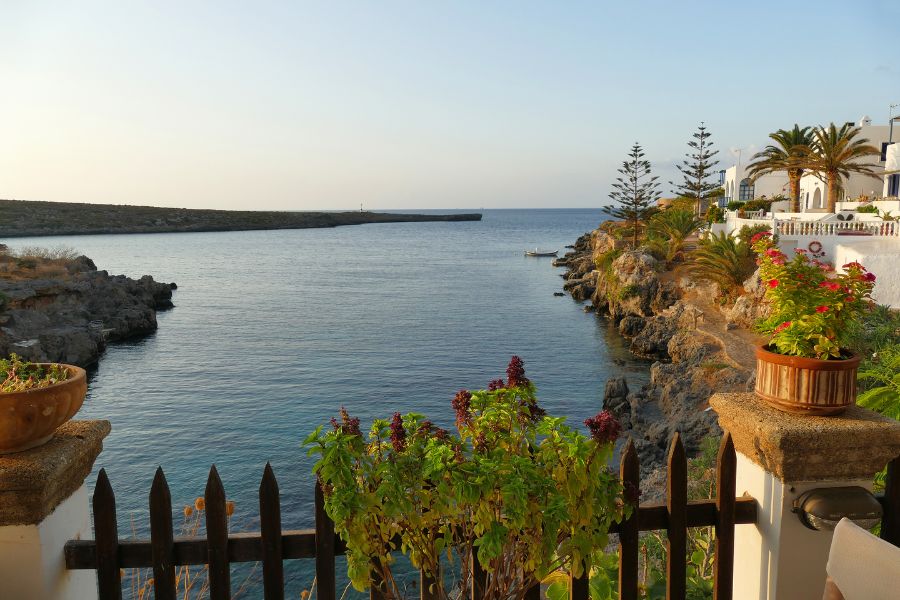
Underwater visibility is fantastic at both beaches. I spent ages spotting fish and exploring rocky nooks.
Child-Friendly Beaches and Safety Tips
Avlemonas is a dream for families with little kids. The creek in the center stays shallow and calm—no scary currents.
The sandy part of the bay makes it easy for children to wade in. I noticed lots of parents relaxing at nearby cafés, keeping an eye on their kids.
Safety features for families:
- Shallow water for beginners
- No strong currents or waves
- Cafés and facilities right by the beach
- Easy access, no tricky walks
Most Kythira beaches have super clear water, so you can always spot any hazards. The island’s bays stay calm for most of the season.
I’d suggest packing water shoes for the rocky bits. It makes exploring a lot more comfortable.
Mylopotamos: The Watery Surprise
Mylopotamos is pure magic—one of Kythira’s most enchanting villages, where the constant sound of flowing water sets a peaceful mood. This place blends natural beauty with a rich history, thanks to its watermills, Venetian ruins, and lush greenery.
Lush Landscape and Running Waters
Mylopotamos sits right in the middle of a lush ravine. The name comes from “mylos” (mill) and “potamos” (river)—and you’ll see why as soon as you arrive.
Tall pines, plane trees, and willows shade the stone houses. Even in the summer heat, the village feels cool and comfortable under its thick canopy.
Water runs everywhere here. Streams trickle through the village, fed by springs that never seem to dry up.
The Kamari spring provides fresh water all year. It’s been the lifeblood of the community for generations.
Greenery grows wild along the water channels. It creates a microclimate that’s both refreshing and unique for a Greek island.
Watermills and Waterfall Wonders
The Lagadi area is home to several old stone watermills. These mills once ground grain using the power of the running water.
I stumbled on a lovely waterfall, known to locals as “Fairy.” Water tumbles over rocks into a small, clear pool—strongest in spring and early summer.
Stone paths connect the mills, winding through the ravine. Each mill cleverly channels water for maximum power.
Families brought their grain here for centuries. The mills, with their stone walls and wooden wheels, are a living piece of village history.

Key watermill features:
- Stone construction
- Wooden water wheels
- Grinding mechanisms
- Water channels
Historic Sites and Venetian Architecture
The Venetian Castle of Kato Chora rises near the village, its stone walls and old defenses still standing.
Over the main gate, I spotted the lion of Saint Mark—a clear Venetian signature.
The Cave of Agia Sofia hides a tiny chapel at its entrance. Inside, you’ll find 13th-century murals and natural rock formations.
Panagia Orfani monastery perches on a rocky outcrop nearby. It’s an old religious spot with sweeping views.
Kato Chora, the preserved settlement, keeps its traditional Greek island look. Stone houses with red tile roofs line the narrow lanes.
Island Connections and Travel Essentials
Getting to Kythira takes a bit of planning—it’s tucked between the Peloponnese and Crete, so transport options are limited. The main town of Chora makes a great base for exploring, and the island’s closeness to mainland Greece shapes both its culture and how you’ll get around.
Getting to Kythera and Around the Island
Flying into Kythira Airport turned out to be the fastest way to arrive. Seasonal flights from Athens take just 50 minutes, which felt surprisingly quick. The airport itself is tiny and sits near Potamos, right in the middle of the island.
Ferry connections also bring you to Kythira. Neapolis on the Peloponnese mainland offers a year-round route that takes about an hour, while Gythio runs ferries during the summer months. I always preferred the Neapolis route, especially when I needed to bring a car along.
You really need a car on Kythira. I learned this the hard way—buses rarely show up, and taxis are practically nonexistent. The island’s roads twist through the mountains, linking up scattered villages, so public transport just doesn’t cut it if you want to see places like Avlemonas.
Definitely book your car ahead of time during July and August. Local rental agencies in Chora and near the airport usually offer better deals than the big international brands.
Chora and the Heart of the Island
Chora, the capital, became my home base. It’s smack in the center and has all the essentials. The hilltop town looks out over the sea, and most hotels, restaurants, and shops cluster here.
I stayed close to the main square, where old-school architecture meets modern comforts. The Venetian castle towers above town, and I never got tired of those sunset views or the reminder of Kythira’s strategic past.
All the main banking and medical services are in Chora. You’ll find the island’s main ATM, a pharmacy, the post office, and even the police station here. It’s just convenient for anything official you might need.

From up here, the evenings cool off nicely—such a relief after roasting in the sun while exploring coastal spots like Avlemonas.
The Peloponnese Influence and Neighboring Villages
Kythira sits so close to the Peloponnese that you can really feel the mainland’s influence. I noticed it in the food, the architecture, and even the daily pace.
Neapolis, just across the water, keeps Kythira supplied. Every day, ferries bring in fresh produce, newspapers, and all sorts of goods, keeping island life tied to the mainland.
Villages like Potamos and Mylopotamos show off this connection. Their kafeneions buzz with local chatter, and the customs feel very much like the Peloponnese. A lot of families have homes on both sides, which struck me as a pretty unique way to live.
You’ll spot Mani Peninsula-style stone towers in Kythira’s older buildings. It’s a reminder of centuries of back-and-forth across that narrow sea channel.
Frequently Asked Questions
People always ask what makes Kythira stand out, how to get there, and what to do once you arrive. The island offers unique natural sites, fun for families, and rich cultural heritage. I never felt unsafe here, which is always a plus.
What are the main attractions to visit in Kythira?
Avlemonas is easily one of the prettiest coastal villages I’ve seen. Its tiny harbor sits tucked between two calm bays, and the whole place looks like it belongs on a postcard.
Crystal-clear emerald water laps at the shore, and you’ll spot little fishing boats bobbing in the harbor. It’s got that authentic, unspoiled vibe.
Mylopotamos is totally different. The famous waterfall and wild ravine stretch from Neraida waterfall all the way out to Kalami beach.
I followed the hiking trails past old watermills and under thick plane trees. There’s running water and lush greenery everywhere—perfect for a slow nature walk.
How can one travel to Kythira?
You can reach Kythira by ferry or plane. The island’s airport gets regular flights from Athens, which makes things easy.
Ferries leave from Piraeus and several Peloponnese ports. Just make sure to check the schedules—these change with the seasons, and missing a connection isn’t fun.
Renting a car is a must if you want to explore the scattered villages and beaches. Avlemonas, for example, is about 20 kilometers northeast of Chora.
What unique sites does Kythira offer for nature lovers?
The Mylopotamos ravine blew me away. There’s a marked trail that hugs the stream, passing waterfalls and shady spots all the way.
Avlemonas offers sheltered bays with water so clear you can see every pebble. The wild coastline reminded me a bit of the Cyclades, but with its own twist.
Hiking paths crisscross the island, linking up villages and beaches. On some trails, you’ll catch glimpses of both the Aegean and Ionian Seas—pretty special, if you ask me.
Is Kythira a family-friendly destination?
Avlemonas is perfect for families. The swimming areas are calm and protected, and natural rock pools form little “swimming pools” that kids love.
The shallow bays make swimming safe, and most restaurants and cafes are used to catering for families.
Mylopotamos is great for older kids who like nature walks. The waterfall hike is easy and doubles as an outdoor classroom.
What cultural heritage can be found on Kythira?
In Avlemonas, the Cavallini house once held the Austro-Hungarian consular agency. There’s still an old sundial above the door, which I thought was a neat detail.
Fishing traditions are alive and well here. Even with a few tourists around, Avlemonas keeps its authentic character.
Every August 6, the feast of Sotira takes over the port. Thousands show up for this celebration—it’s easily one of the island’s biggest cultural events.
Are there any safety concerns for tourists visiting Kythira?
Honestly, Kythira feels pretty safe for most travelers. The island’s calm vibe and low crime rates made me relax almost immediately.
If you’re heading to Avlemonas for a swim, you’ll notice the protected bays keep things safe most days. Still, it’s smart to stick to the usual water safety habits—no need to get reckless just because the place looks like paradise.
The Mylopotamos hiking trails invite a bit of adventure, but don’t forget the basics. I always pack sturdy shoes, especially for those slippery, rocky bits near the waterfalls.

